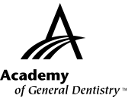|
Exercise No. 381
Subject Code: 017
Dental Materials
The 15 questions for this exercise are based on the article Influence of an arginine-containing toothpaste on bond strength of different adhesive systems to eroded dentin on pages 67-73. This exercise was developed by Charles Martello, DDS, MAGD, in association with the General Dentistry Self-Instruction committee.
|
Reading the article and successfully completing the exercise will enable you to:
- understand the mechanism of action for bonding to eroded dentin;
- understand the effect of arginine-containing toothpaste on bond strength; and
- develop insight for successful treatment of dentinal sensitivity.
|

